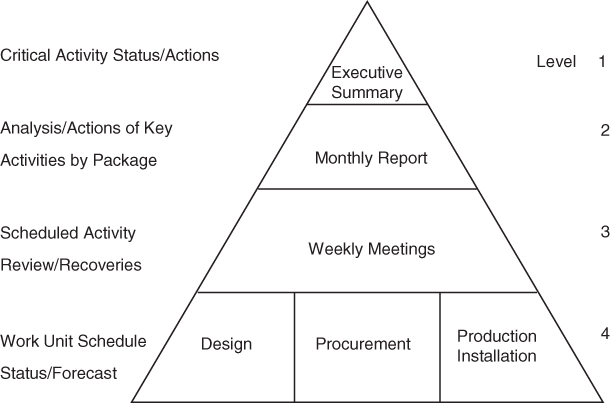Section M Reporting
Obviously, a man's judgement cannot be better than the information on which he has based it. Give him the truth and he may still go wrong when he has the chance to be right, but give him no news or present him only with distorted and incomplete data, with ignorant, sloppy or biased reporting, with propaganda and deliberate falsehoods and you destroy his whole reasoning process.
Address to the New York State Publishers Association, August 30, 1948, by Arthur Hays Sulzberger
The challenge for reporting the Where of the project in the project status is:
- For what purpose is the information required?
- In what format and how should the information be presented?
See Part I Section E The Manager of Projects for what interests your boss.
A generic and typical reporting structure is shown in Figure IV.M.1 below.

1 Reporting Cycle
1.1
Set up weekly, bi‐weekly, or monthly (whichever is appropriate) cost and schedule reporting systems for all project groups. Make sure you receive honest and accurate reports.
1.2
A guideline for the minimum review cycle is the length of the project divided by ten or twelve. However, if the data is based on a best guess, the review cycle needs to be more frequent, for example, double this number.
1.2.1
For most projects, a week is the most appropriate reporting period. For very large extended ...
Get Effective Project Management now with the O’Reilly learning platform.
O’Reilly members experience books, live events, courses curated by job role, and more from O’Reilly and nearly 200 top publishers.

